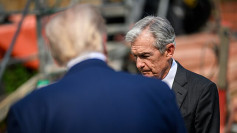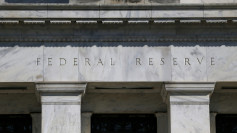The U.S. economy grew at an annualized pace of 3.3% in the second quarter, a sharper rebound than previously reported, as consumer spending and trade shifts helped offset ongoing weakness in business investment.
The Commerce Department on Thursday upgraded its initial estimate of 3% growth for April through June, following a 0.5% contraction in the first quarter - the nation's first decline in three years. Economists surveyed ahead of the release had expected a 3.1% gain.
The stronger performance reflected a steep drop in imports, which fell at a 29.8% annual rate as businesses stopped stockpiling goods ahead of President Donald Trump's tariffs. Because imports subtract from GDP, the reversal boosted second-quarter growth by more than five percentage points.
Consumer spending, which accounts for about 70% of GDP, rose at a 1.6% annual rate - modest but stronger than the 0.5% pace in the first quarter and higher than the government's earlier 1.4% estimate. "Real GDP was revised up 0.3 percentage point from the advance estimate, primarily reflecting upward revisions to investment and consumer spending that were partly offset by a downward revision to government spending and an upward revision to imports," the Commerce Department said.
Private investment, however, fell 13.8%, the largest drop since the early months of the pandemic in 2020. Reductions in business inventories alone shaved 3.3 percentage points off overall growth. Government spending contracted at a 4.7% annual pace, after a similar decline in the prior quarter.
A measure of underlying momentum - consumer spending and private investment excluding trade, inventories and government - grew 1.9%, matching the first quarter. The figure suggests that while headline growth looked solid, the foundation of the economy remains uneven.
The trade-driven rebound highlights the impact of Trump's aggressive tariff policy, which has reshaped global supply chains. Since returning to the White House, Trump has imposed double-digit taxes on imports from nearly every country, targeting sectors from steel and aluminum to autos. He has argued tariffs protect U.S. industry and finance tax cuts, while economists warn the approach risks higher costs and inefficiency.
Markets showed little immediate reaction to the GDP revision. Gold held steady, with spot prices trading at $3,401.70 an ounce, up 0.18% on the day. Analysts said the precious metal's resilience reflected investor caution despite signs of stronger-than-expected economic activity.






